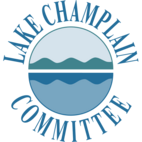Protecting Shorelines
February 2013

Something about a wooded lakeshore invites exploration. Poking along in a canoe beneath the low-hung boughs of a cedar or birch tree you never know what you might find. Aesthetic draw is only one of the many benefits that natural shorelines offer. Yet, undeveloped shorelines have become increasingly rare.
Naturally vegetated shorelines protect water quality and ecological health. The deep roots of trees and shrubs provide bank stability. During the Lake Champlain floods of 2011, vegetated shorelines resisted erosion better than grassy shores or even areas with retaining walls. The over-hanging branches shade the water. That shade, plus wood that falls into the lake from the shoreline, provides better habitat for fish. Autumn leaves falling from the trees create habitat for insects upon which the fish feed. Vegetated shorelines help treat stormwater pollution. A 100-foot vegetated buffer absorbs 73% of stormwater runoff; a bare grass lawn absorbs only 18%. Cleared shorelines contribute 18 times more sediment, five times more runoff and seven times more phosphorus to the lake than those where the shoreline is wooded. Steven Carpenter, a Wisconsin limnologist and 2011 Stockholm Water Prize laureate, the world’s most prominent award for outstanding achievements in water-related activities, described riparian vegetation as the “number one way to build resilience to climate change for lakes”.
Since naturally vegetated shorelines protect water quality they also offer economic benefits both for homeowners and the community. For the landowner, properties on clearer lakes are worth more. One study found for every one meter increase in water clarity a property's value increased by $200 per foot of frontage. For the community, clean lakes bring not only added tax revenue from higher property values, but also tourist dollars. A study from the University of Vermont compared the average annual total visitor expenditures for a state park located on a lake or pond to the average for those without waterfront. The difference was stark; parks on lakes generated nearly three times the revenue of non-lake based state parks.
Given the great value of vegetated shorelines, the minimal effort that society makes to protect this resource is depressing. Neither New York nor Vermont has statewide regulations to limit shoreline clearing. New York does at least have protections for lakes within the Adirondack Park. Depending on the designated land use, these regulations set minimum lot widths between 50 and 200 feet and minimum structure setbacks of 50 to 100 feet. Vermont leaves shoreline regulation to towns and only 20% of towns have such standards. As a result, shoreline condition for Vermont lakes is worse than in other Northeastern states, and even worse than the national average. Only 17% of Vermont lakeshores are in good condition as measured by the extent of disturbance and lawns along the shore, compared to 42% regionally and 35% nationally.
Governing bodies have emphasized voluntary programs and educational materials on how to better manage shorelines, but voluntary approaches have failed. While some individual landowners have invested in shoreline protection the overall pace and severity of clearing in this vulnerable area has accelerated. We have seen unchecked clearing of shorelines to show off massive properties or give private citizens a view. The result has been a sacrifice of public water resources. It is time for the states and municipalities to enact better regulations to protect shorelines. By protecting the lake and the water quality we all depend on, such actions also protect the investments of landowners and the interests of the community.
Lake Look is a monthly natural history column produced by the Lake Champlain Committee (LCC). Formed in 1963, LCC is the only bi-state organization solely dedicated to protecting Lake Champlain’s health and accessibility. LCC uses science-based advocacy, education, and collaborative action to protect and restore water quality, safeguard natural habitats, foster stewardship, and ensure recreational access.
Get involved by joining LCC using our website secure form (at www.lakechamplaincommittee.org), or mail your contribution (Lake Champlain Committee, 208 Flynn Avenue - BLDG 3 - STUDIO 3-F, Burlington, VT 05401), or contact us at (802) 658-1414, or lcc@lakechamplaincommittee.org for more information.
